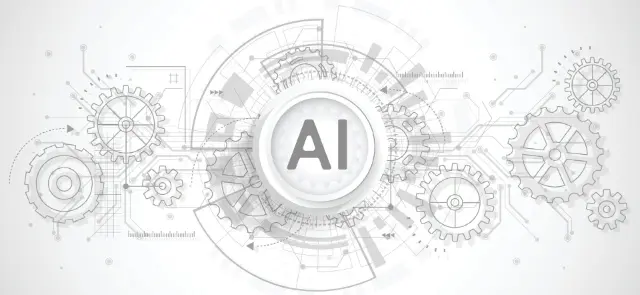Overcoming Challenges in Loan Payment Processing Automation with Python, AI, and the Cloud
Loan payment processing is a critical yet complex task in the lending industry. It involves managing a high volume of transactions, updating records accurately, and sending receipts promptly. Manual processing of these tasks is prone to errors, delays, and inefficiencies.
Loan Payment Processing Automation: A Path to Efficiency and Accuracy
To address these challenges, forward-thinking lending institutions are turning to loan payment processing automation powered by Python, AI, and cloud-based solutions. This automation streamlines the entire process, from payment collection to record keeping and receipt generation. By eliminating manual intervention, automation reduces errors, improves efficiency, and enhances the customer experience.

Python, AI, and the Cloud: A Powerful Trio for Loan Payment Processing Automation
Unleashing the Power of Python for Unattended Bots
Python is an ideal choice for developing unattended bots for loan payment processing automation. These bots can operate independently without human intervention, handling high volumes of transactions and repetitive tasks with speed and accuracy.
Attended Bots: Enhancing Efficiency with Human-in-the-Loop
Attended bots, also built using Python, assist human employees in loan payment processing. They automate routine tasks, such as data entry and validation, allowing employees to focus on more complex tasks that require human judgment. The flexibility of Python enables customization of these bots to meet specific business needs.
Cloud Platforms: A Superior Choice for Automation Orchestration
Cloud platforms offer far more capabilities as automation orchestrators compared to traditional RPA/workflow tools. They provide a comprehensive set of features, including:
- Scalability: Cloud platforms can handle large volumes of transactions without compromising performance.
- Security: Cloud platforms adhere to strict security standards, ensuring the protection of sensitive financial data.
- Integration: Cloud platforms seamlessly integrate with other business systems, enabling end-to-end automation.
AI: Enhancing Accuracy and Handling Edge Cases
AI techniques such as image recognition, natural language processing (NLP), and generative AI (Gen AI) can significantly improve the accuracy and efficiency of loan payment processing automation. These techniques enable the system to:
- Extract data from scanned documents and images
- Understand and interpret unstructured data, such as emails and chat messages
- Handle exceptions and edge cases that may arise during processing

Building the Loan Payment Processing Automation with Python and the Cloud
Analyzing the Sub-Processes
The loan payment processing lifecycle involves several distinct sub-processes:
- Payment Collection: Receiving payments from borrowers through various channels.
- Record Updating: Updating loan records with payment information.
- Receipt Generation: Sending payment receipts to borrowers.
Automating the Sub-Processes with Python and Cloud
1. Payment Collection:
- Use Python scripts to integrate with payment gateways and process payments securely.
- Store payment data in a cloud database for easy access and retrieval.
2. Record Updating:
- Develop Python functions to update loan records in real-time based on payment information.
- Use cloud-based data storage for efficient and scalable record management.
3. Receipt Generation:
- Create Python templates for generating payment receipts.
- Use cloud-based email services to send receipts to borrowers automatically.
Data Security and Compliance
Data security and compliance are paramount in the lending industry. Python and cloud platforms provide robust security measures to protect sensitive financial data:
- Encryption: Data is encrypted both at rest and in transit.
- Authentication: Access to data is restricted through secure authentication mechanisms.
- Compliance: Cloud platforms adhere to industry-recognized compliance standards, such as PCI DSS and HIPAA.
Advantages of Python over No-Code RPA/Workflow Tools
- Flexibility: Python allows for greater customization and flexibility in automation development.
- Scalability: Python scripts can be easily scaled to handle high volumes of transactions.
- Integration: Python seamlessly integrates with various third-party systems and applications.
Algorythum’s Approach
Algorythum takes a different approach to BPA by leveraging Python and cloud-based solutions. This approach addresses the limitations of off-the-shelf RPA/workflow tools, which often lack the flexibility, scalability, and security required for complex loan payment processing automation.

The Future of Loan Payment Processing Automation
The convergence of Python, AI, and the cloud holds immense potential for further enhancing loan payment processing automation. Future advancements may include:
- Cognitive Automation: Leveraging AI to automate complex decision-making and handle exceptions.
- Blockchain Integration: Using blockchain technology to provide secure and transparent record-keeping.
- Mobile-First Automation: Developing mobile-based solutions for convenient loan payment processing.
Subscribe and Contact Us
Subscribe to our newsletter to stay updated on the latest trends and advancements in loan payment processing automation.
Contact our team today for a free feasibility assessment and cost estimate for your custom automation requirements. Together, we can transform your loan payment processing operations, unlocking new levels of efficiency, accuracy, and customer satisfaction.

Algorythum – Your Partner in Automations and Beyond
At Algorythum, we specialize in crafting custom RPA solutions with Python, specifically tailored to your industry. We break free from the limitations of off-the-shelf tools, offering:
- A team of Automation & DevSecOps Experts: Deeply experienced in building scalable and efficient automation solutions for various businesses in all industries.
- Reduced Automation Maintenance Costs: Our code is clear, maintainable, and minimizes future upkeep expenses (up to 90% reduction compared to platforms).
- Future-Proof Solutions: You own the code, ensuring flexibility and adaptability as your processes and regulations evolve.









